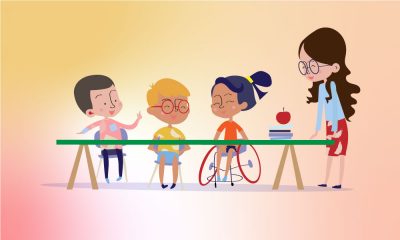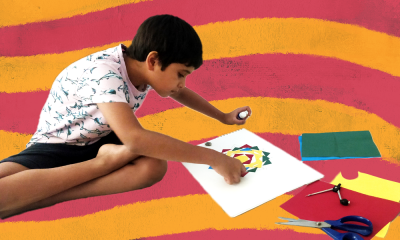Special Needs
How Occupational Therapists Are Helping Children with Special Needs During COVID-19
Teletherapy has added to the accessibility of interventions.
“I’ve been doing therapy for 20 years, I can just walk in and be in auto mode, do a whole session and walk out; now all of that went out the window since we went virtual,” said Chaula Badiani, an occupational therapist and the founder and clinical director of Reach Therapy Center for Children in Mumbai. Having seen how COVID-19 was unfolding in other countries, she instructed her team to start working remotely from mid-March.
Badiani and her team of therapists work with kids who have developmental delays, learning difficulties, and neurodevelopmental conditions including autism, ADHD and cerebral palsy. The children require hands on-therapy like sensory integration and neurodevelopmental treatment to help them with essential life skills, improve fine motor skills, and strengthen hand-eye coordination.


For Badiani, a network of therapists across the globe helped her as she transitioned her practice online. Photo courtesy: Chaula Badiani
A regular neurodevelopmental treatment would involve the therapist working the muscles and guiding the body to do different movements. “[Now], we can’t put our hands on a child who has tight muscles or low tone, we have to now go by the feel of the parent, or by our clinical judgment on what we’re seeing [on camera],” Badiani told Re:Set. The switch to teletherapy has not been an easy one but the team, along with the parents and children, are determined to stay on track with their progress.
“[Now], we can’t put our hands on a child who has tight muscles or low tone, we have to now go by the feel of the parent, or by our clinical judgment on what we’re seeing [on camera].”
All the therapists are trained to carry out procedures themselves but having to coach someone like a parent who is unfamiliar with the intricacies has been a learning curve.
For Badiani, the first few months of lockdown came with many late nights as she combed through the internet to find out how other therapists across the world were coping with the changes. Apart from a rapidly increasing work environment, the lockdown brought with it more household chores and child care responsibilities. She discovered a support system in a virtual network of mental health entrepreneurs that helped in the process of shifting her practice from physical to virtual.
While the popularity of teletherapy is starting to pick up, with the center getting 30-40% more referrals from across India as opposed to just Mumbai, there are still many students who are unable to keep up with these sessions due to poor technical resources or lack of space at home.
The challenges of keeping children engaged online
Being consistent with therapy is necessary for many children with disabilities to stay on track with their progress. As therapists set the wheels in motion to transition online, the gap in sessions impacted some children.
“I [noticed] one or two kids [showed a slowing down of progress] because of no therapy,” said Mumbai-based speech therapist Prachi Jain, who works with children who have conditions including autism and hearing impairments. Thus, the pivot to online sessions became necessary to keep the children engaged with their language development goals.


For Jain, the switch to the virtual sessions meant having to redesign some of her strategies and rethinking goals for the children. Photo courtesy: Prachi Jain
Many of the children who Jain works with have oral-motor dysfunction which are difficulties using lips, jaw and tongue that may affect their speech and abilities to swallow and eat. Jain helps them make the right movements through swallowing exercises, lip, tongue, and jaw exercises and was able to actively monitor their progress as they were in front of her. Currently, over video, this has not been an easy task to carry out without the intervention of parents.
She also works with some children who have hyperactivity where even sitting in front of the screen for five minutes has proven to be a challenge. Thus, she has to plan her strategies, depending on the child’s interests.
“I have to be more animated. If I’m using Zoom, the virtual background has to be attractive so that the child likes it,” Jain told Re:Set, adding that she also engages children with simple games that include colours and counting to help with their language development.
Also read: How the COVID-19 Lockdown Is Impacting Students With Autism and ADHD
When in-person sessions do restart, Jain will have to proceed with caution considering the coronavirus. “We have kids who have oral motor difficulties and feeding difficulties. I have to be careful about doing all therapy techniques [that] involve the mouth,” she told Re:Set. Since the children have to look at her face and mouth during exercises, she may not be able to even wear a mask, so a face shield and gloves will have to do.
For now, in the absence of being able to touch, hug, and reassure the kids, it is virtual high-fives and blowing kisses that keep their bond alive.

























